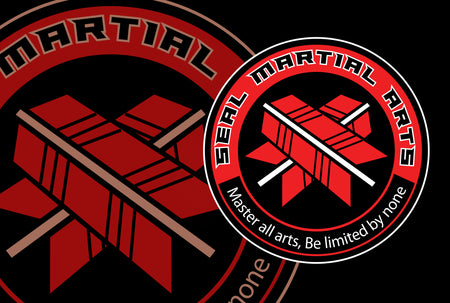
Kakushi Buki: The Hidden Weapons of Ninjutsu and Japanese Martial Arts
In the world of Ninjutsu and Japanese martial arts, mastery often lies in the ability to conceal as much as it does in the skill to reveal. Among the array of techniques and tools employed by practitioners, Kakushi Buki, or hidden weapons, occupy a unique and intriguing place. These covert instruments, designed for stealth and surprise, have a rich history deeply embedded in the clandestine traditions of the Ninja and the broader martial arts culture of Japan.
The roots of Kakushi Buki can be traced back to ancient Japan, where espionage, infiltration, and assassination were integral components of warfare. While the samurai warriors adhered to a strict code of honor, the Ninja operated in the shadows, employing guile and subterfuge to achieve their objectives.
In their clandestine operations, Ninjas required weapons that were compact, easily concealable, and capable of delivering lethal force in close quarters. Thus, Kakushi Buki emerged as a vital arsenal in their toolkit.
Shuriken (Throwing Stars): Perhaps the most iconic of all hidden weapons, shuriken were small, star shaped projectiles designed for throwing. They could be concealed within clothing or carried in inconspicuous pouches, allowing Ninjas to strike swiftly and silently from a distance.
Kunai: Originally farming tools, kunai were repurposed by Ninjas as multi purpose weapons. They could be used for thrusting, slashing, or even as makeshift climbing implements. Their simple, utilitarian design made them easy to conceal and deploy in a variety of situations.
Shuko and Ashiko: These were hand and foot claws worn by Ninjas to enhance their grip and traction, particularly when scaling walls or navigating treacherous terrain. Despite their defensive utility, shuko and ashiko could also be used offensively in close combat.
Tekko Kagi: Also known as "tiger claws," tekko kagi were metal claws worn over the hands to augment punching and scratching attacks. Their sharp points could inflict serious injury, making them effective tools for both offense and defense.
Kyoketsu Shoge: A combination of a hooked blade and a weighted chain, the kyoketsu shoge was a versatile weapon favored by Ninjas for its adaptability. It could be used for slashing, ensnaring, or disarming opponents, offering a range of tactical options in combat.
While the era of the Ninja has long since passed, the legacy of Kakushi Buki continues to resonate in modern martial arts practice. Many techniques and principles inspired by these hidden weapons have been integrated into contemporary self defence systems, demonstrating their enduring relevance and effectiveness.
Moreover, the concept of concealment and surprise remains a fundamental aspect of martial arts strategy, emphasizing the importance of adaptability, deception, and strategic thinking in combat scenarios.
Kakushi Buki represents a fascinating intersection of history, tradition, and tactical innovation within the realm of Ninjutsu and Japanese martial arts. By delving into its origins and examining its diverse array of weapons, we gain insight not only into the techniques of the Ninja but also into the broader cultural and martial heritage of Japan.
The roots of Kakushi Buki can be traced back to ancient Japan, where espionage, infiltration, and assassination were integral components of warfare. While the samurai warriors adhered to a strict code of honor, the Ninja operated in the shadows, employing guile and subterfuge to achieve their objectives.
In their clandestine operations, Ninjas required weapons that were compact, easily concealable, and capable of delivering lethal force in close quarters. Thus, Kakushi Buki emerged as a vital arsenal in their toolkit.
Shuriken (Throwing Stars): Perhaps the most iconic of all hidden weapons, shuriken were small, star shaped projectiles designed for throwing. They could be concealed within clothing or carried in inconspicuous pouches, allowing Ninjas to strike swiftly and silently from a distance.
Kunai: Originally farming tools, kunai were repurposed by Ninjas as multi purpose weapons. They could be used for thrusting, slashing, or even as makeshift climbing implements. Their simple, utilitarian design made them easy to conceal and deploy in a variety of situations.
Shuko and Ashiko: These were hand and foot claws worn by Ninjas to enhance their grip and traction, particularly when scaling walls or navigating treacherous terrain. Despite their defensive utility, shuko and ashiko could also be used offensively in close combat.
Tekko Kagi: Also known as "tiger claws," tekko kagi were metal claws worn over the hands to augment punching and scratching attacks. Their sharp points could inflict serious injury, making them effective tools for both offense and defense.
Kyoketsu Shoge: A combination of a hooked blade and a weighted chain, the kyoketsu shoge was a versatile weapon favored by Ninjas for its adaptability. It could be used for slashing, ensnaring, or disarming opponents, offering a range of tactical options in combat.
While the era of the Ninja has long since passed, the legacy of Kakushi Buki continues to resonate in modern martial arts practice. Many techniques and principles inspired by these hidden weapons have been integrated into contemporary self defence systems, demonstrating their enduring relevance and effectiveness.
Moreover, the concept of concealment and surprise remains a fundamental aspect of martial arts strategy, emphasizing the importance of adaptability, deception, and strategic thinking in combat scenarios.
Kakushi Buki represents a fascinating intersection of history, tradition, and tactical innovation within the realm of Ninjutsu and Japanese martial arts. By delving into its origins and examining its diverse array of weapons, we gain insight not only into the techniques of the Ninja but also into the broader cultural and martial heritage of Japan.
